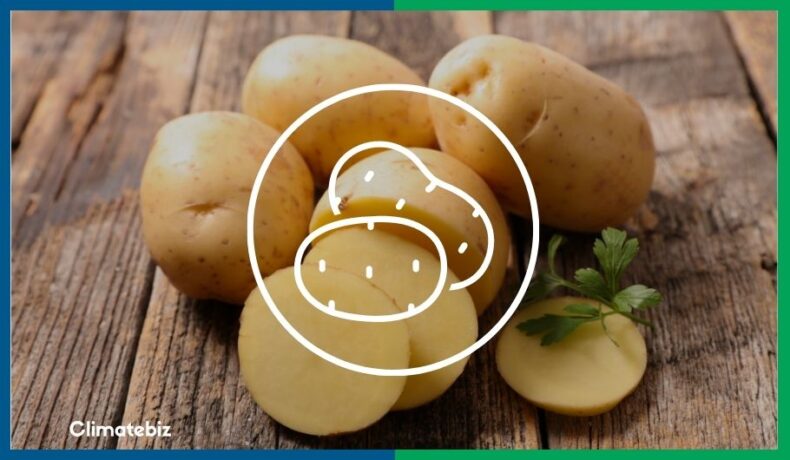Before we jump into hydroponic potato tips, let’s take a moment to appreciate the round and robust vegetable that we have come to love.
Roasted, sliced, grilled, fried — let’s face it, potatoes are a staple in just about every dish! However, potatoes do so much more than tickle your tastebuds.
Research shows that potatoes are an essential dietary staple and contribute significantly to global food security. This means that when the climate changes, the production security of the potato changes too!
In fact, studies predict that potato crops will feel the adverse effects of expected climate change and so quite possibly see a threat to future food security.
Why are we telling you this?
Well, producing potatoes means you’re indirectly helping the fight for food security sustainably.
Basically, we’re saying that you’re a hero!
Traditionally, potatoes are grown in the ground, but as most of you know, they can be grown in a soilless environment instead. More specifically, through hydroponics.
Ready to learn more?
This article takes you on a brief tour of the components behind growing hydroponic potatoes and provides you with handy hydroponic potato tips too.
Table of Contents
Can Potatoes Be Grown Hydroponically?
The answer is yes!
Potatoes can be grown hydroponically; they grow particularly well within an ebb and flow system.

Source: Comfy Home Corner
To break things down a little more, an ebb and flow system is a hydroponic system that repeatedly pumps nutrient-rich water up into a container with growing plants and then allows the water to drain back down.
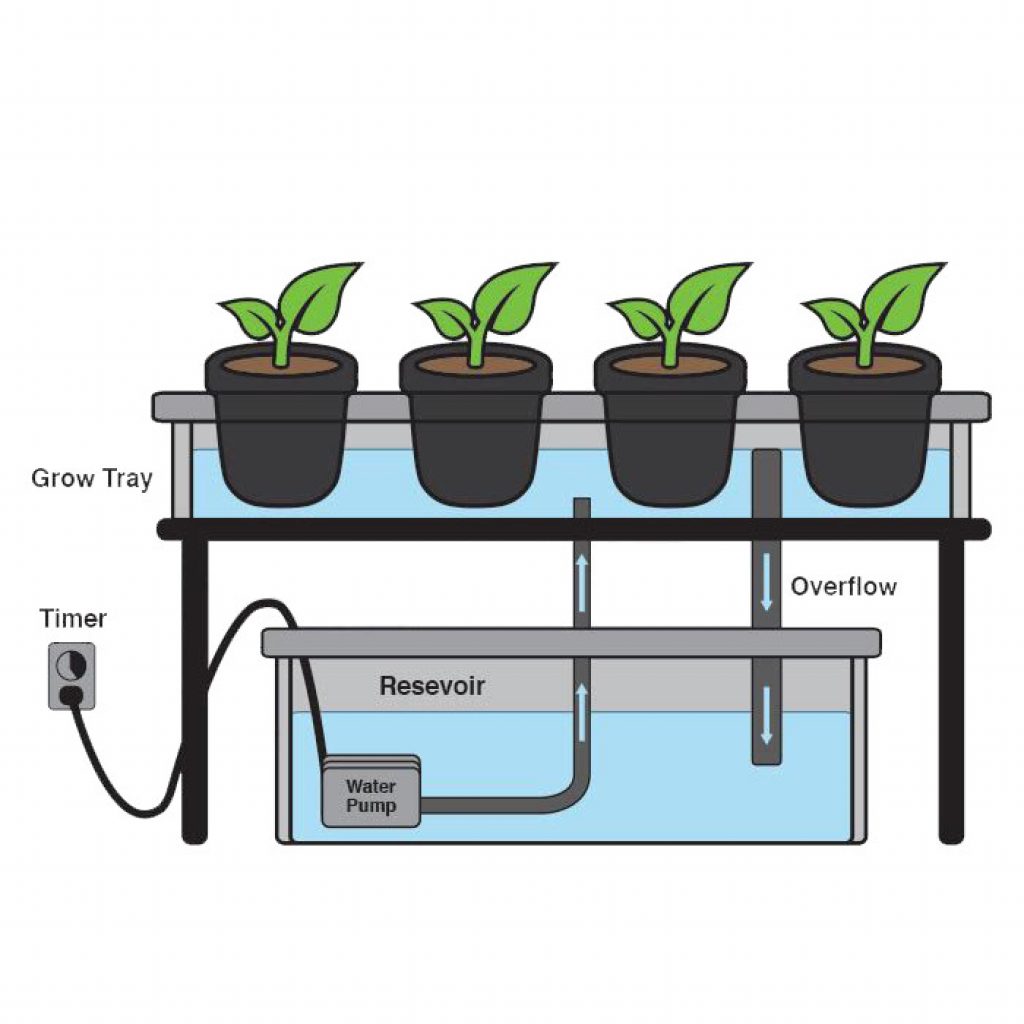
Source: Hydrobuilder
But before we discuss the above system, here is a look at the processes to follow behind these budding beauties.
How Are Hydroponic Potatoes Best Grown?
Getting Started
First off, it’s imperative that you have certified potato seeds and a suitable growing medium.
Plant the seeds in Rockwool blocks (with the cut side facing down), cover them, and keep them properly moist to allow germination and sprouting (expect this to take about two weeks).
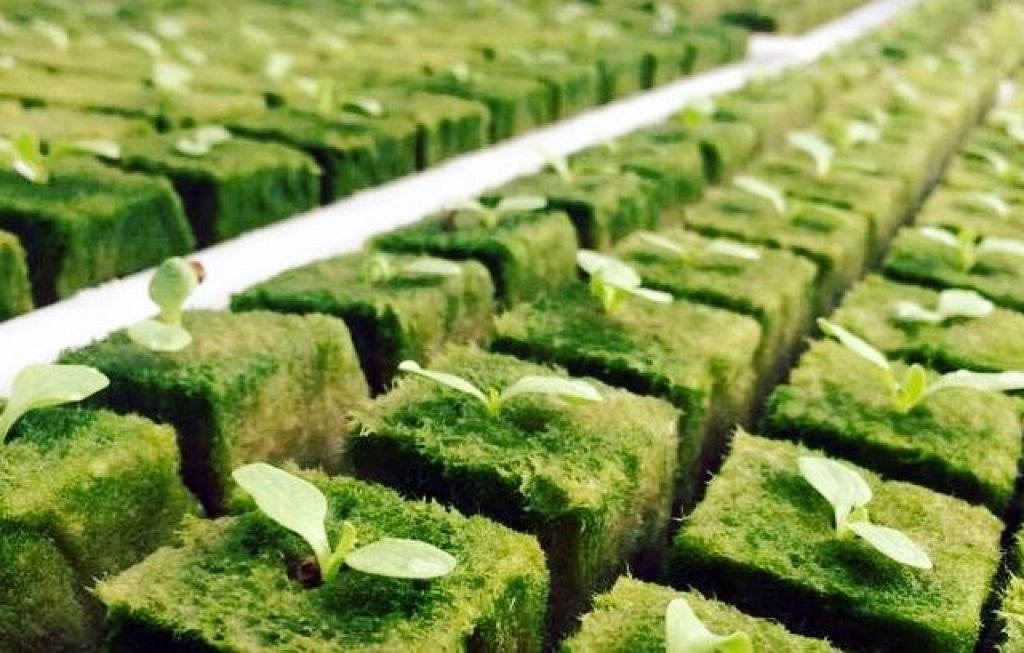
Source: High Tech Gardening
Once the sprouts are visible, open the container and let the transplanting begin!
Moving To The Open Ebb And Flow System
The time has come to transplant the germinated seeds into your growing aggregate.
Perlite is an excellent choice as a growing medium because of its ability to draw up plenty of water and maintain oxygen inside.

Source: Upstart University
Now that your sprouts are exposed, they’ll need more specialized care. This includes lighting needs, a proper pH balance, and adequate nutrition.
Lighting Requirements
The upper portion of potato plants needs an abundant supply of light!
Optimal light is around 10-12 hours of daylight, with a minimum of 6 hours.
If you’re looking at an indoor growing system, LED grow lights make the perfect and most efficient fit. These lights are readily available online, and there are plenty of options!
Plant Nutrition And Maintaining pH
As your potatoes start producing, you’ll most likely need a nutrient solution to replace the naturally occurring nutrients in soils.
A nutrient solution comprises essential elements needed for plant growth, including calcium, magnesium, and iron (those most often found to be deficient).
You’re probably wondering where to find them.
Well, no need to stress; these nutrients are available online in bulk — yes, they’re just a few clicks away!
Alternatively, pop into your local gardening store, and you’ll likely spot a bottle or two.
pH wise, the optimal pH for your nutrient solution must be kept at roughly 6, although any level ranging from 5.8 to 6.2 is acceptable.
Now that you are up to speed with the fundamentals, it’s time to look into a few top hydroponic potato tips and tricks to make your experience even smoother!
5 Tips For Growing Hydroponic Potatoes

Tip 1. Make Sure To Choose The Right System
With so many varieties of hydroponic systems on the market, it’s understandable that you may feel overwhelmed and a little confused about what is best.
The nutrient film technique (also known as the floating raft technique) is a popular system choice.
However, the way in which potatoes grow means that choosing this system will result in clogged pipes and a pretty stuck system.
You may also have come across the term “deep water culture” while reading up on hydroponics. In fact, you may already be considering this option as it’s so similar to ebb and flow!
If you find yourself wondering about deep water culture, it’s essential to know that the technique’s root exposure to air makes this choice unsuitable for potato growing.
What is the take-home message from this tip? Stick to the ebb and flow system for potato growth. It’s both an easy and proven method.
Tip 2. Keep Them Wet But Not Overly Wet
Potatoes are susceptible to malformation or rot when given too much water or grown in too high humidity.
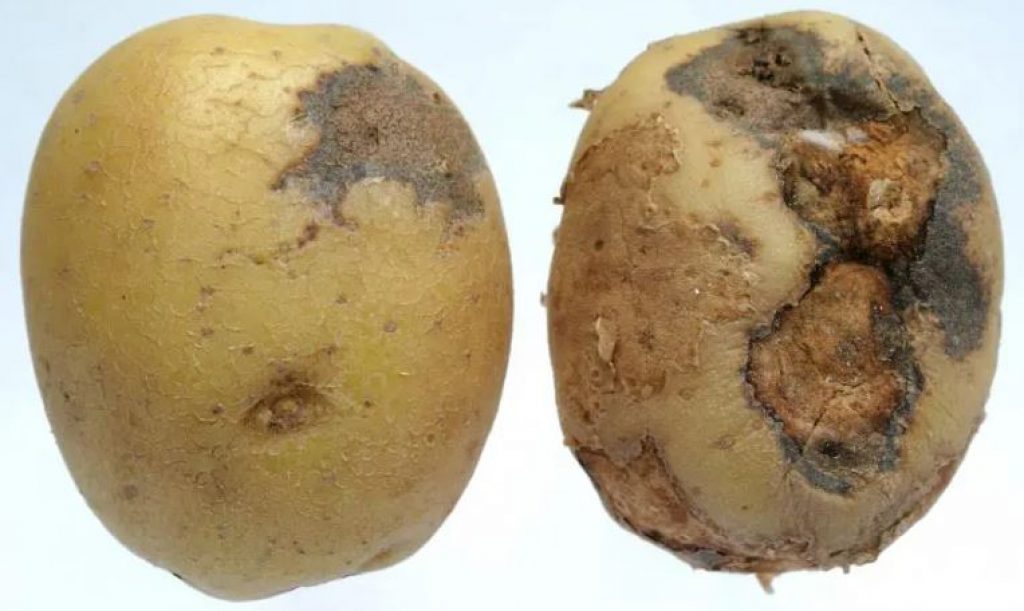
Source: Sumo Gardener
An important tip here is to carefully maintain and monitor the water levels in your system regularly.
In being quite a water sensitive, potatoes are prone to rupturing too.
If you find yourself struggling with humidity, there are great dehumidifiers that will help find a solution for you.
Tip 3. Do Not Expose The Bottom Plant (Tuber) To Any Light
Once the bottom part of your plant (the tuber where potatoes occur) grows, do not (under any circumstances) expose them to light.
Exposure to light makes them turn green; this green consists of the nasty substance solanine.
Solanine is detrimental to the plant’s survival, so you don’t want that happening to your precious potato plant.
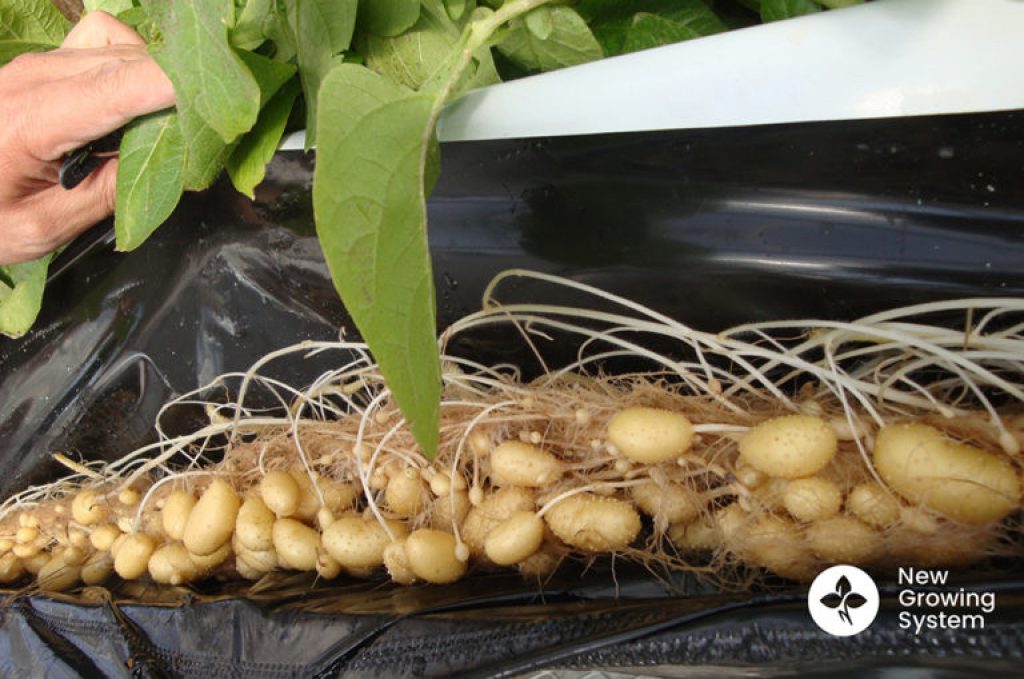
Source: NewGrowingSystem
Tip 4. Check Your Nutrient Solution Temperature
Keeping the temperature of your nutrient solution around 70 degrees Fahrenheit (21 degrees Celcius) is an absolute must.
If you find nutrient temperatures fluctuating, use a water heater or chilling mechanism to make up for any changes.
One of the greener hydroponic potato tips: consider technologies such as geothermal heating for these heating and cooling needs!
Tip 5. Read Up On DIY Solutions And Save A Little!
Let’s face it, setting up a hydroponic system is one thing, but maintaining it is another!
You will most definitely have to pay a penny or two for nutrients, pH measuring equipment, and one or two other non-negotiables while your system is up and running.
These necessities do add up — that’s a fact.
If you’re still needing nutrients, but your budget is tight, you may want to consider making your own hydroponic nutrients.
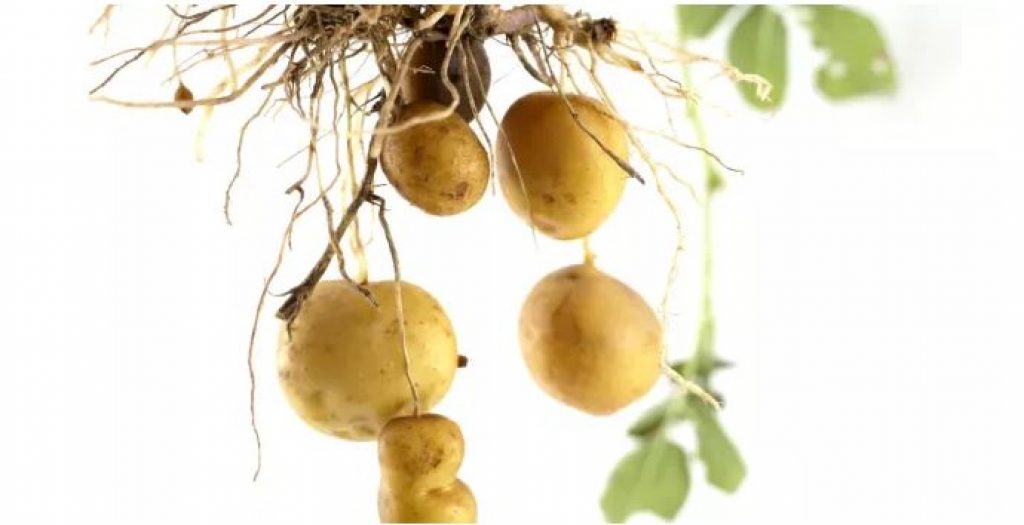
Source: PonicsArea
Final Thoughts
Growing potatoes hydroponically is a neat way to ensure you have a dietary staple despite what climatic conditions may usually allow.
Potatoes are light and water sensitive, requiring proper care.
Follow these top hydroponic potato tips and tricks, and rest assured that your potato process will be pleasant!
If you want to share your thoughts or ask us a question, please feel free to pop a comment in the box below! Alternatively, visit our forum and share what is on your mind today!

